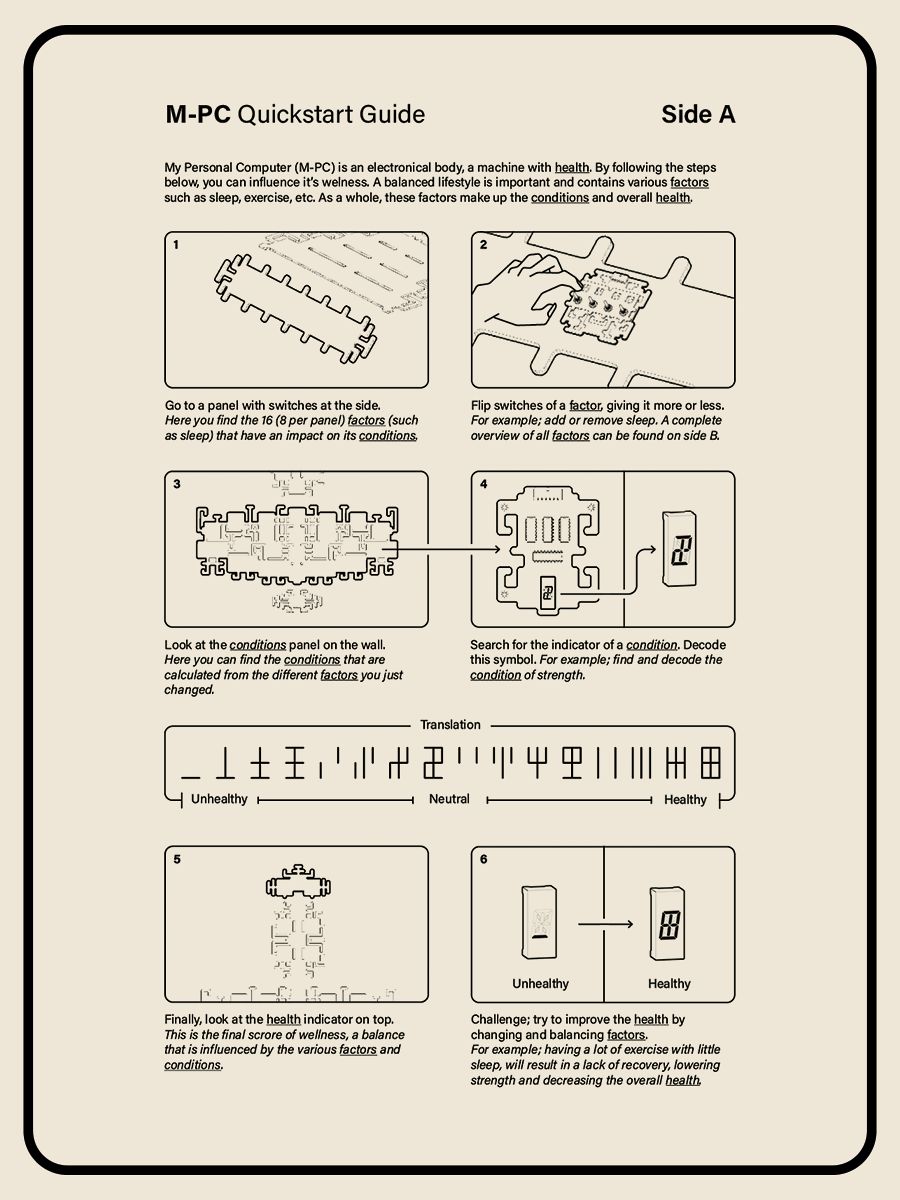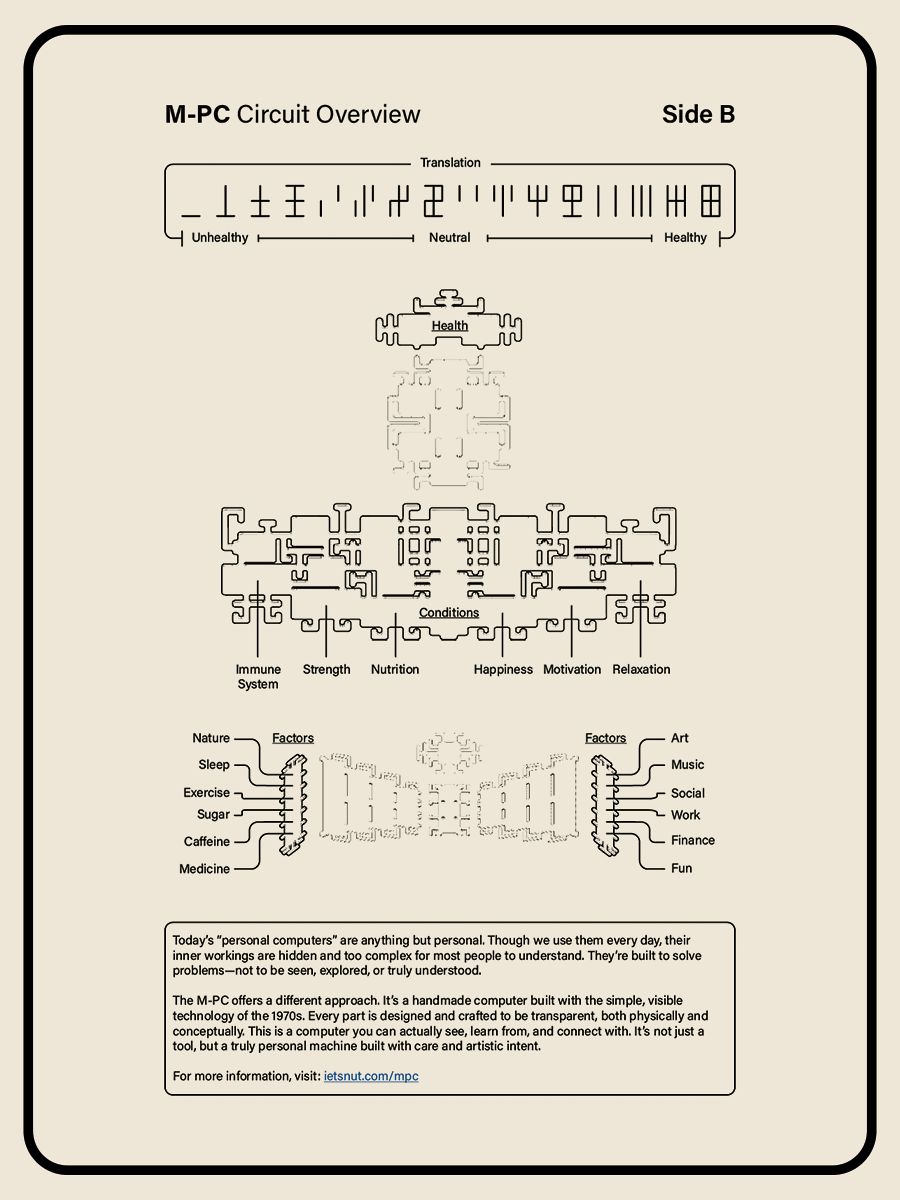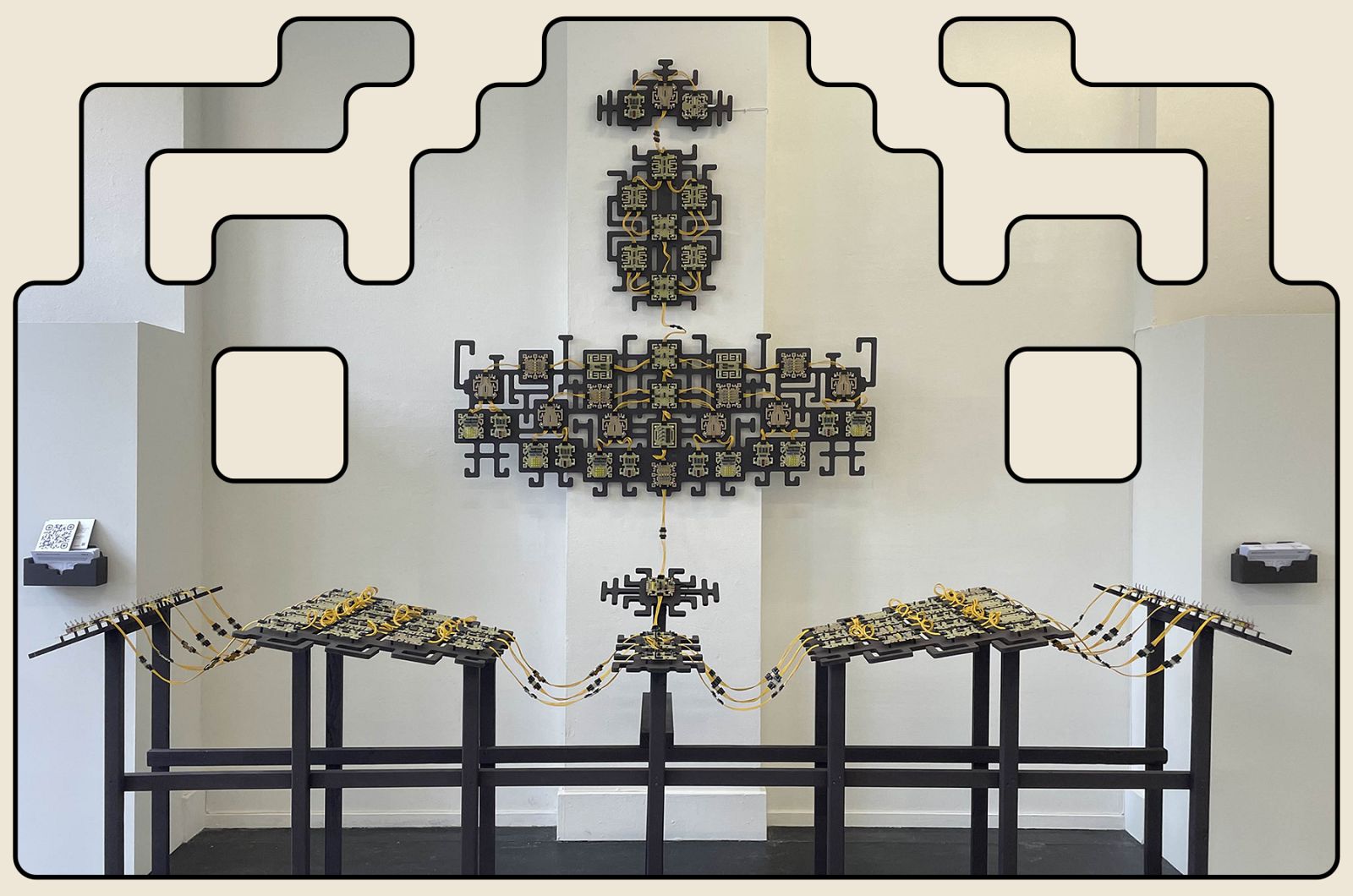
ietsnut
Keywords: Permacomputing, Parametric design, Automata
Internship: Levi van Veluw
Today's "personal computers" are anything but personal. Though we use them daily, their inner workings are hidden and too complex for most people to understand. Modern PCs are built to solve problems, like artificial intelligence, by taking away control. This complexity further increases an unsustainable environmental consumption.
The M-PC offers a different approach: a modular computer built with visible and robust 1970s technology. Every part is handcrafted to be transparent and tangible, inviting you to directly interact with it.
The M-PC architecture is made up of physical modules (circuit boards), each with its own function. Each module has input port(s) at the top and output port(s) and the bottom.
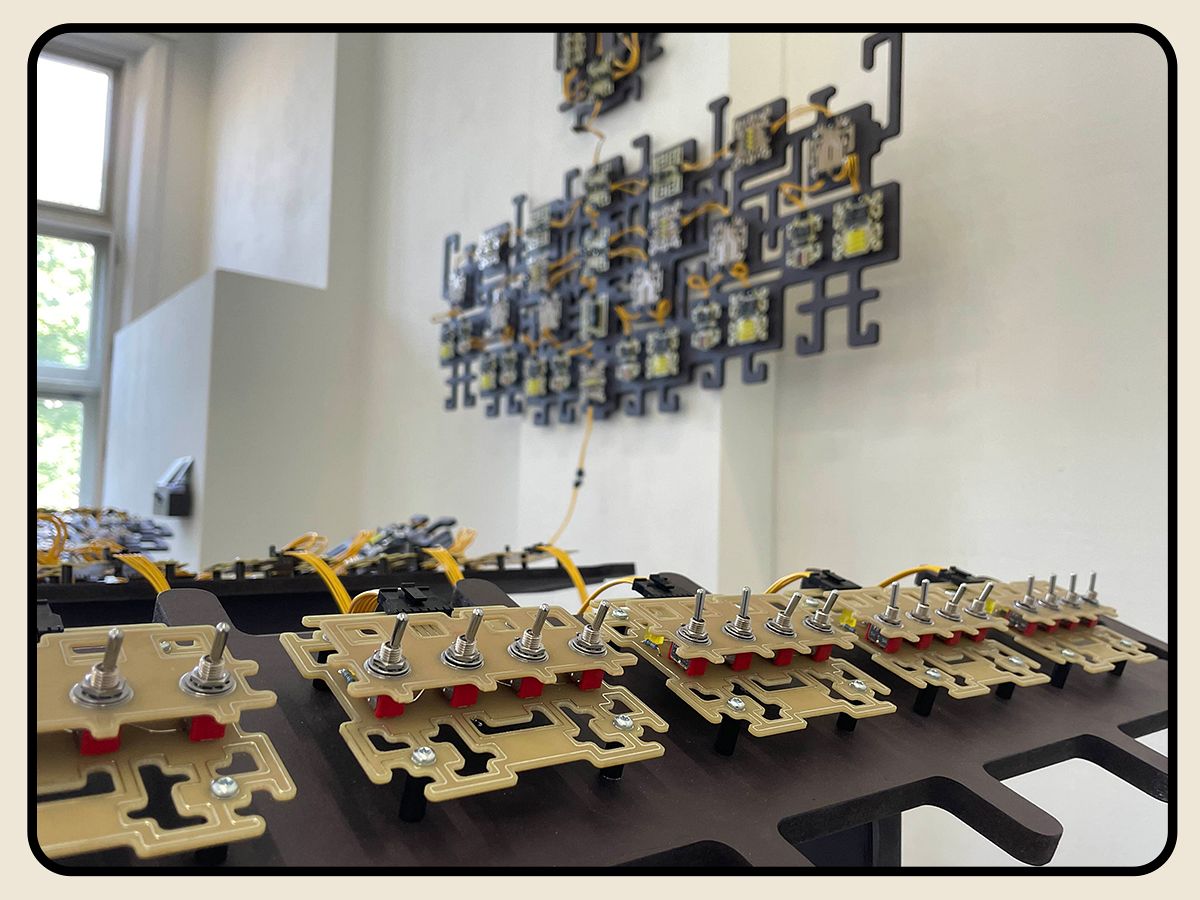
Visitors are encouraged to interact with the computer using the switches at the side.
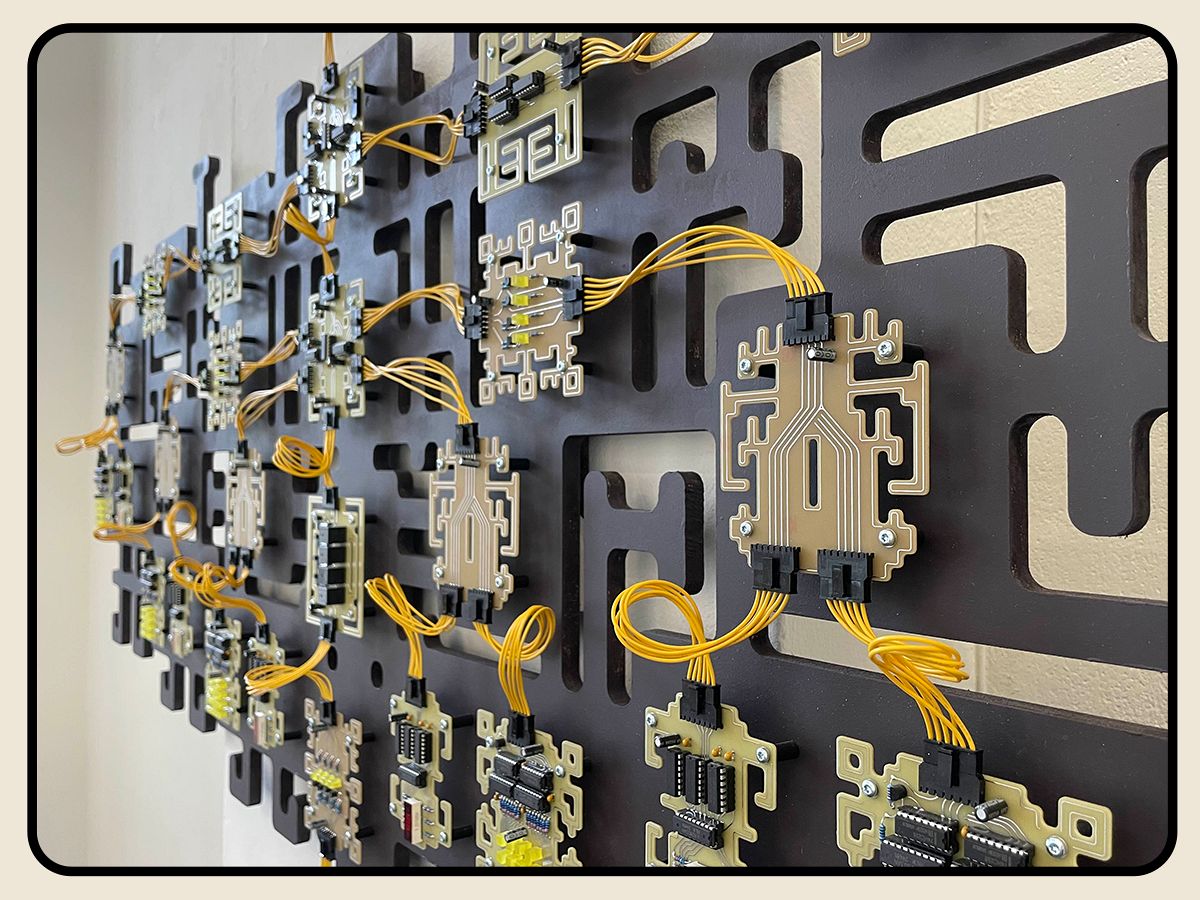
A closeup of the circuit boards and logic circuit.
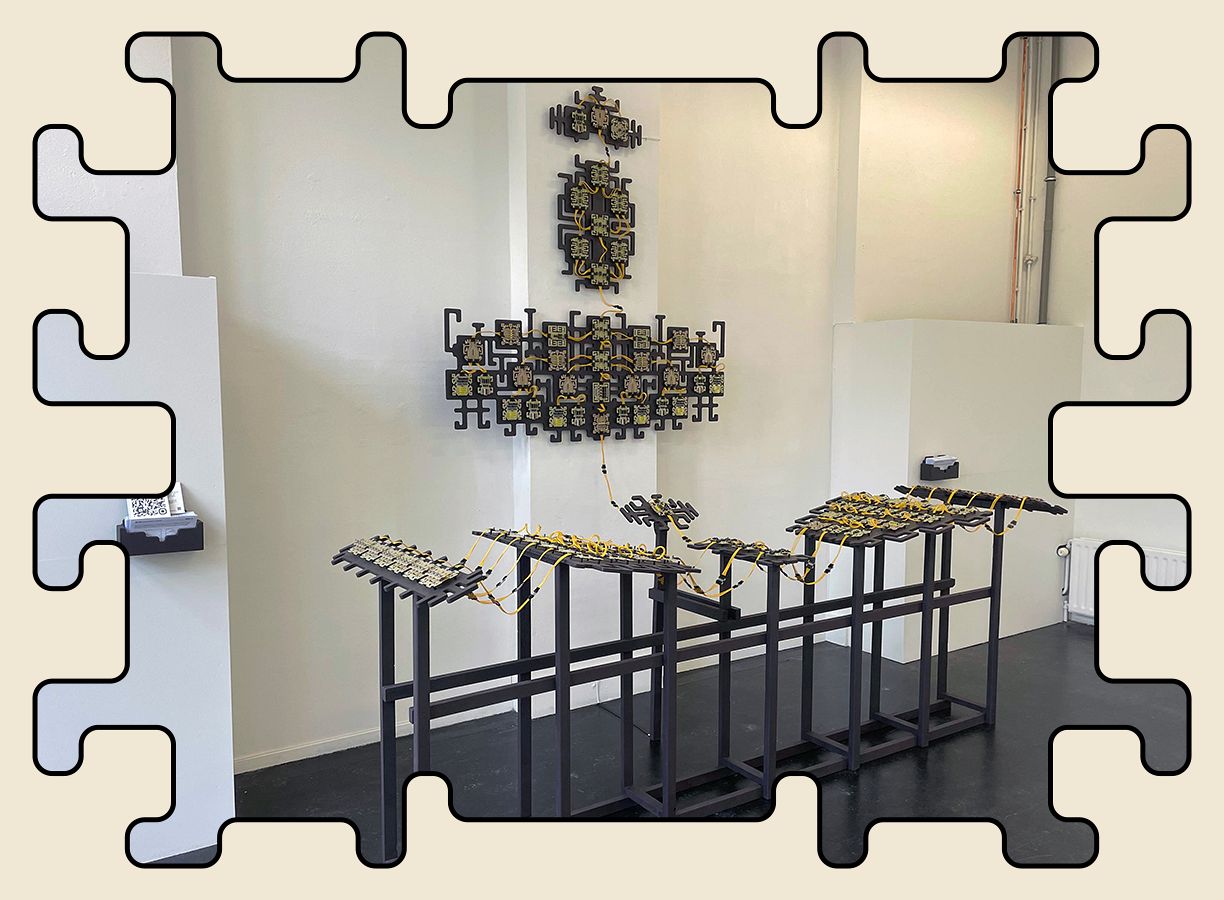
These modules can be connected together to make your own “computer”, personalized to your needs. There is an online simulator available too, accessible at https://ietsnut.com/m/.
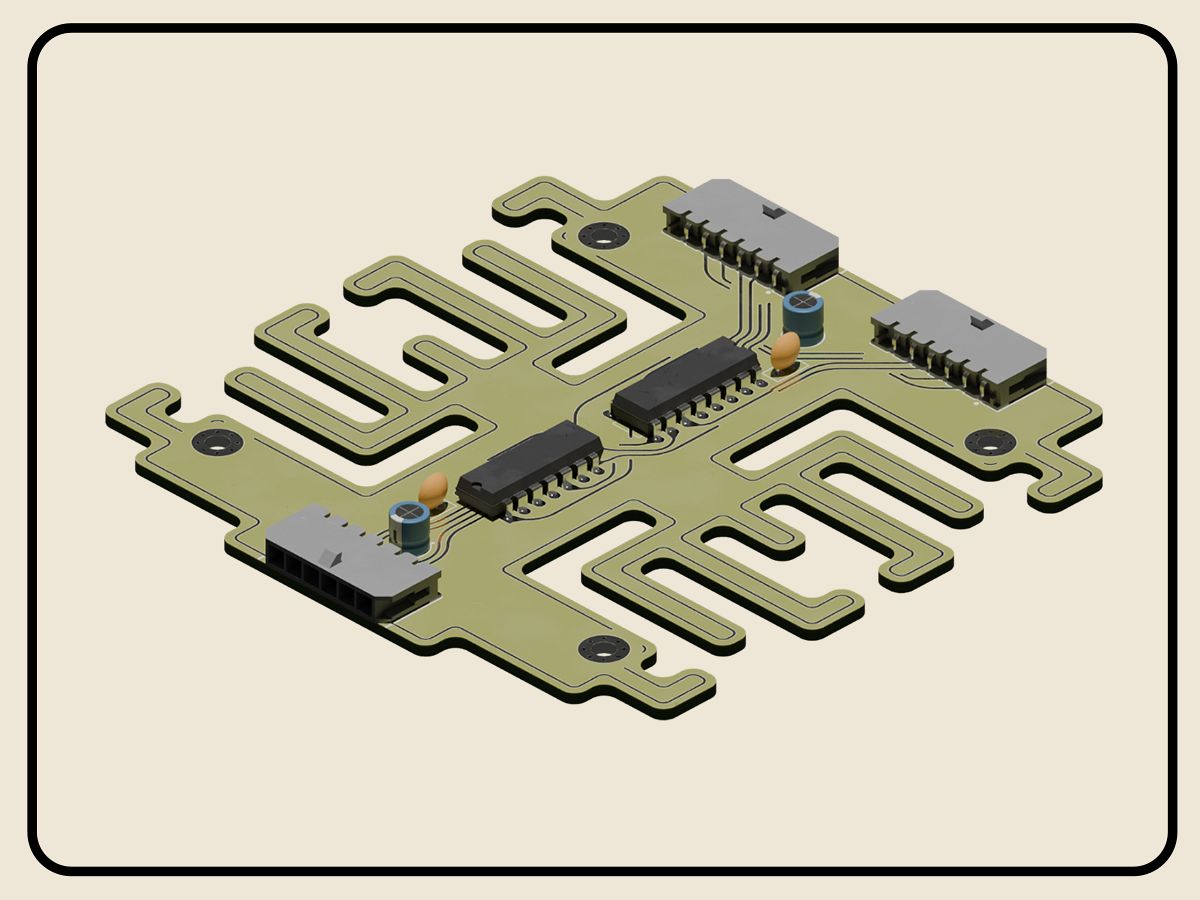
The "adder" module adds two numbers together.
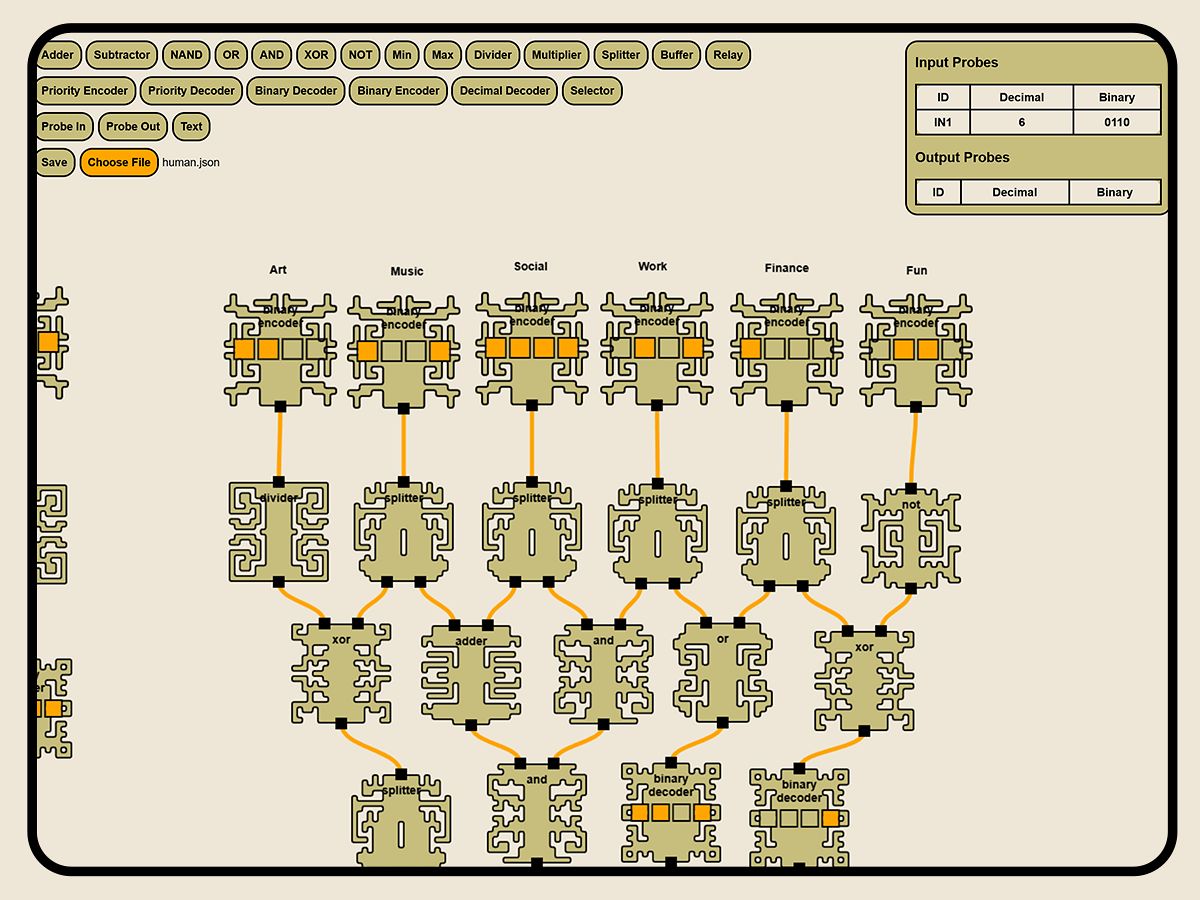
The final MPC circuit in the simulator.
By separating a computer's functions into modular, physical hardware "blocks" that can be linearly connected to make a circuit, computer architecture and history becomes more accessible and open.
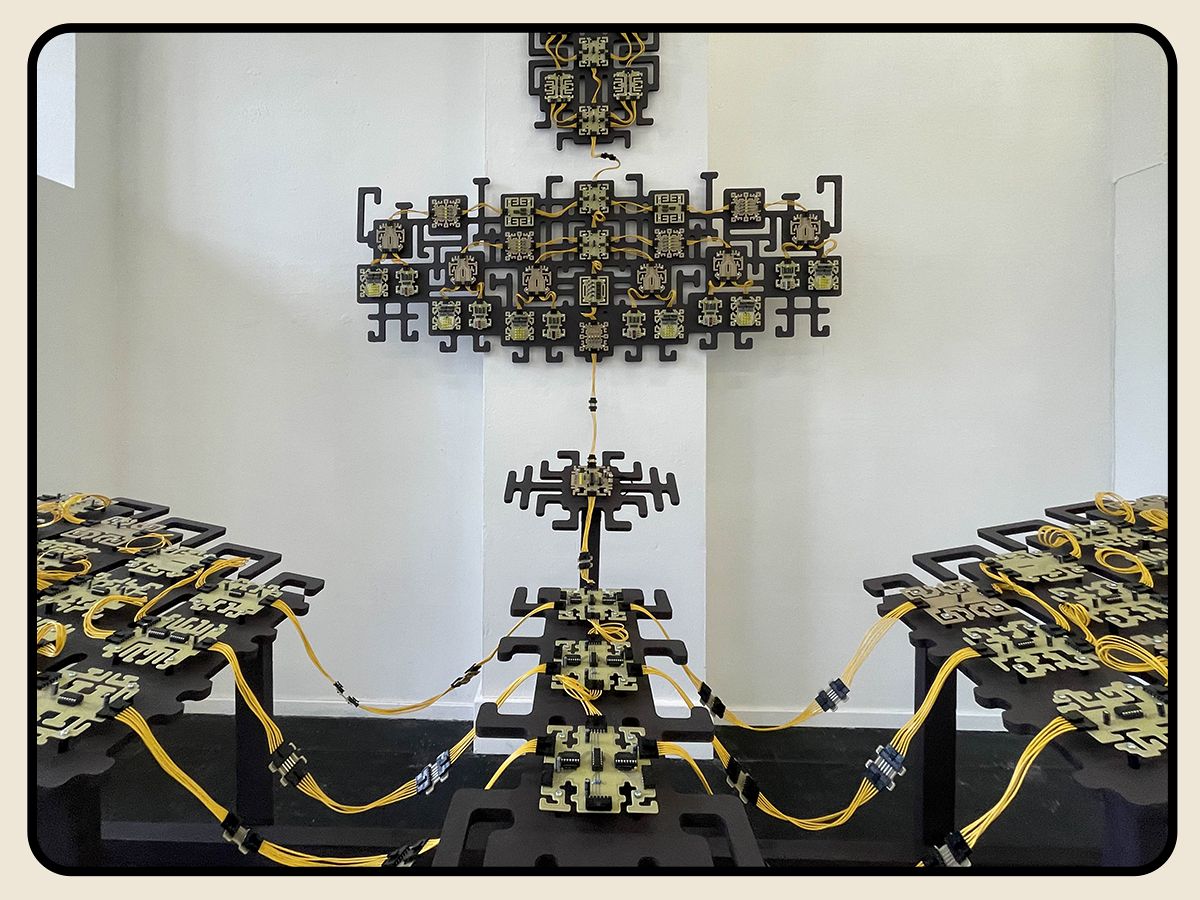
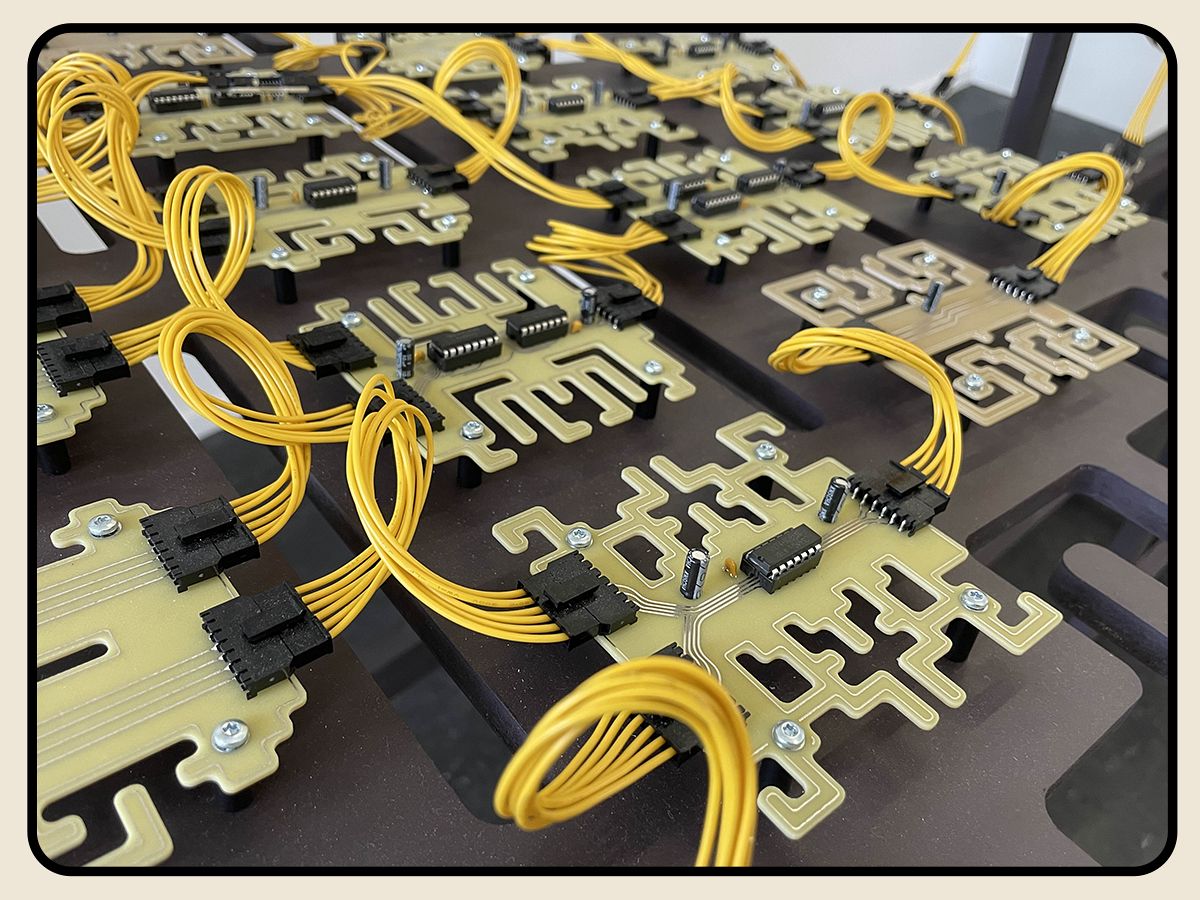
All the electronics components were manufactured in the 70/80's, and are reused/repurposed this way. Compared to modern microcontrollers, this saves a lot of energy and resources, as these old components are still abundant and usually thrown away. Not only are they still very useful on a smaller scale, but also very beautiful.
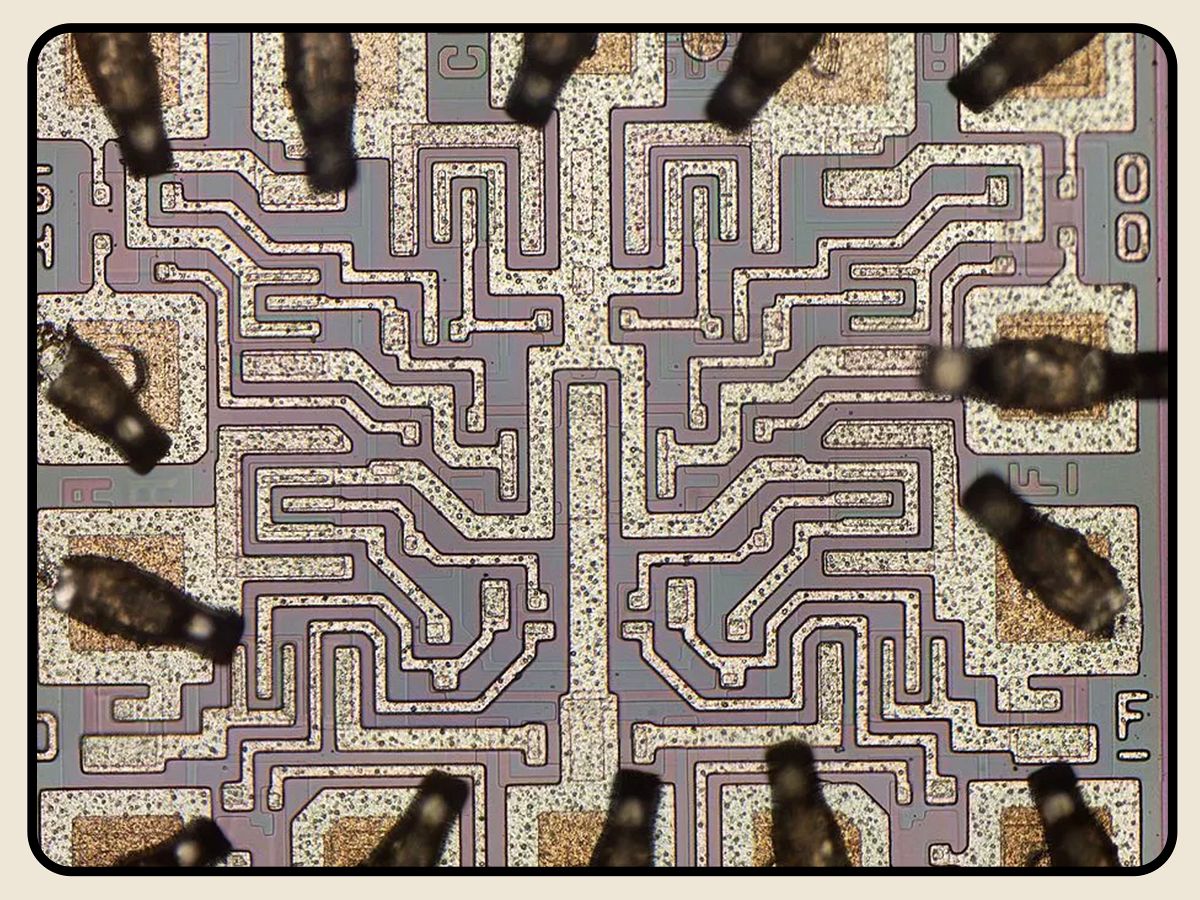
The inside of an 80's logic chip reveals a silicone structure, this is still the basis for modern technology, albeit on a much smaller scale.
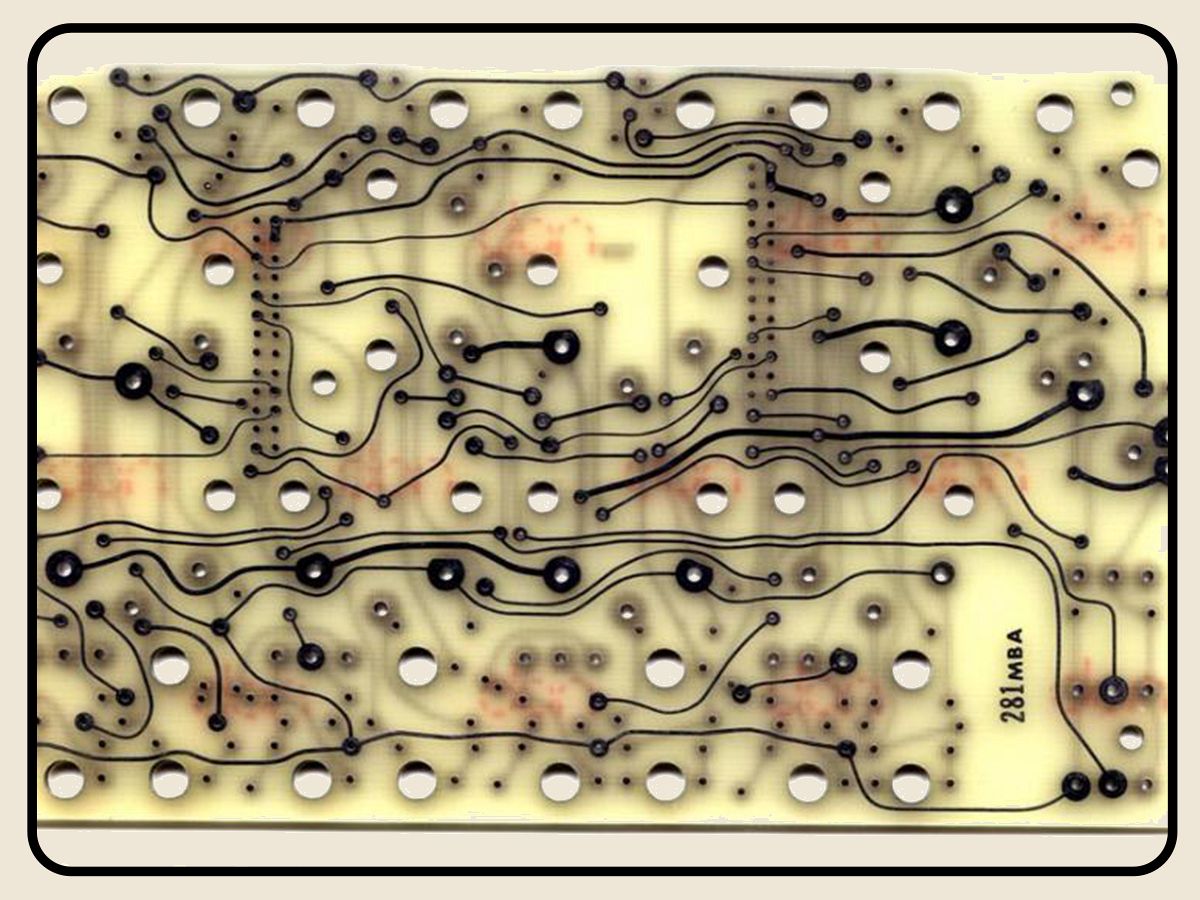
Hand-drawn diagrams, schematics and circuit boards were the norm in the 70/80's, allowing for creative expression and a human touch like curved copper lines.
There is no programming required (everything is analog), but I did develop a custom set of symbols that can be used to read the state of the machine:

Visitors are also provided a "Quickstart Guide" on how to operate the MPC. It contains a brief overview and instructions on how to communicate with the MPC.
